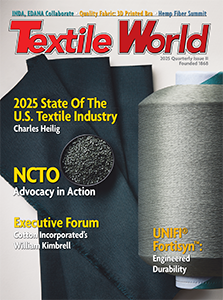ZURICH, Switzerland — December 19, 2017 — Beginning in 2017, producers and suppliers of leather goods can have their products certified to be tested for harmful substances by the International OEKO-TEX® Association. The basis for the certification is the new Leather Standard by Oeko-Tex, which was launched during the annual meeting of the General Managers of the Oeko-Tex institutes in Ostend, Belgium at the beginning of November. Formed in 1992 and celebrating its 25th anniversary in 2017, the Oeko-Tex Association, in response to the latest developments in the textile, leather goods, and footwear market, is adding the leather sector to its extensive testing and certification system that has focused so far on textile products and accessory materials.
In the future, the International Association for Research and Testing in the Field of Textile and Leather Ecology (Oeko-Tex) will use the new Leather Standard product label to distinguish products that meet the strict requirements of the Leather Standard by Oeko-Tex criteria catalogue. The test criteria and limit values in many cases go far beyond applicable national and international standards. The Leather Standard by Oeko-Tex therefore contributes to a high and effective level of product safety and reliability from the consumer’s perspective and lets manufacturers of leather goods in all stages of production distinguish their products to show that they have been tested for harmful substances, providing a reliable decision-making tool for consumers who purchase leather products.
The Oeko-Tex Association is pleased to have obtained the Research Institute of Leather and Plastic Sheeting (Forschungsinstitut für Leder und Kunststoffbahnen – FILK) in Freiberg, Germany and the Test and Research Institute Pirmasens (Prüf- und Forschungsinstitut Pirmasens e.V. – PFI), who are highly acclaimed as specialists in the leather industry, as additional partners for leather goods testing. Together with six other Oeko-Tex institutes that have been established for many years now, the two new establishments, FILK and PFI, will also carry out testing and certification according to the Leather Standard by Oeko-Tex beginning next year.
“We are delighted to see our network of eighteen Oeko-Tex institutes growing steadily and that we managed to obtain such experience and renowned expertise in the field of leather goods production with our two new members. Ultimately, our greatest concern is ensuring consumer protection and environmentally friendly production throughout every area of textile and leather processing,” says Georg Dieners, General Secretary and CEO at Oeko-Tex.
Posted December 19, 2016
Source: OEKO-TEX®.




